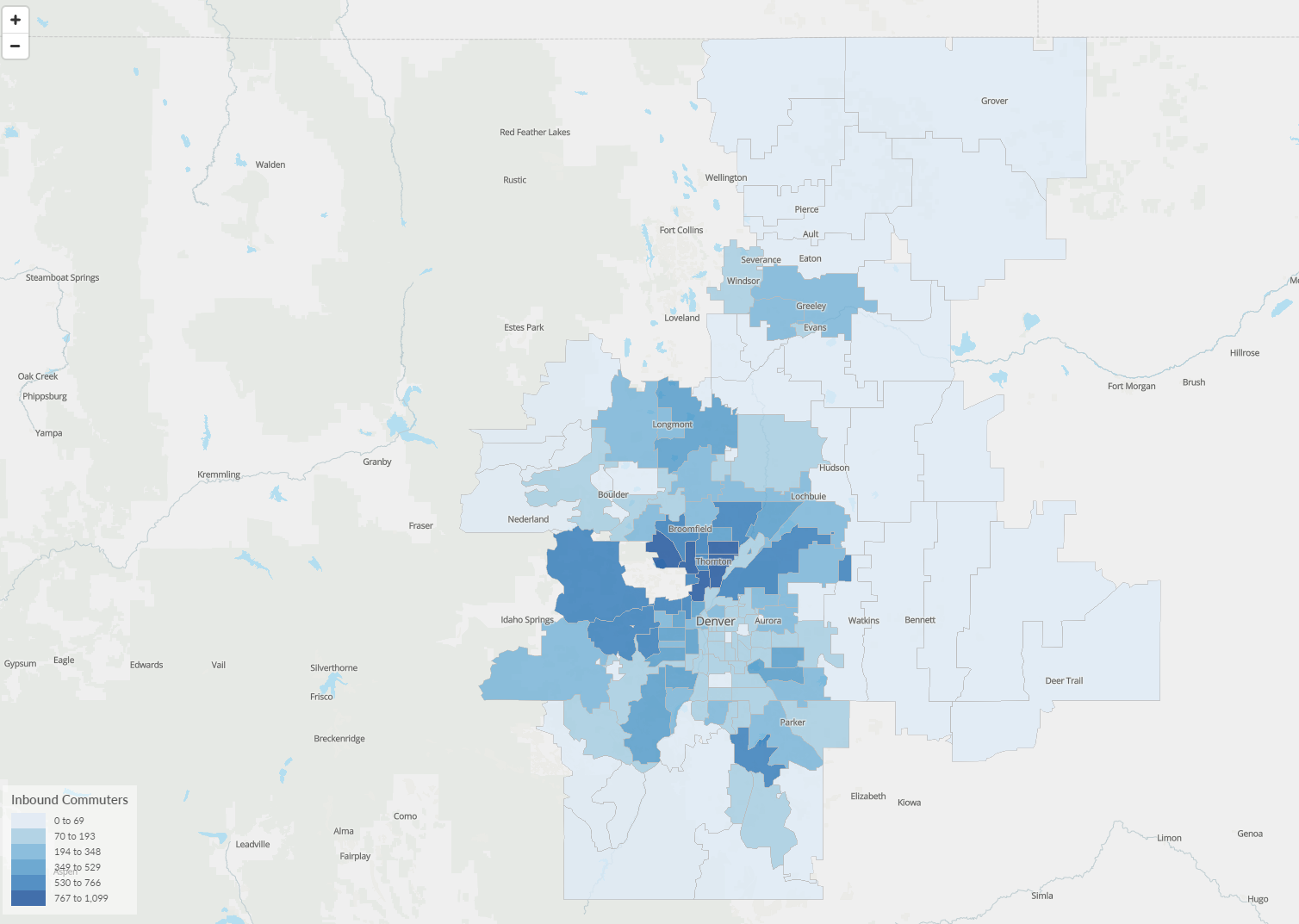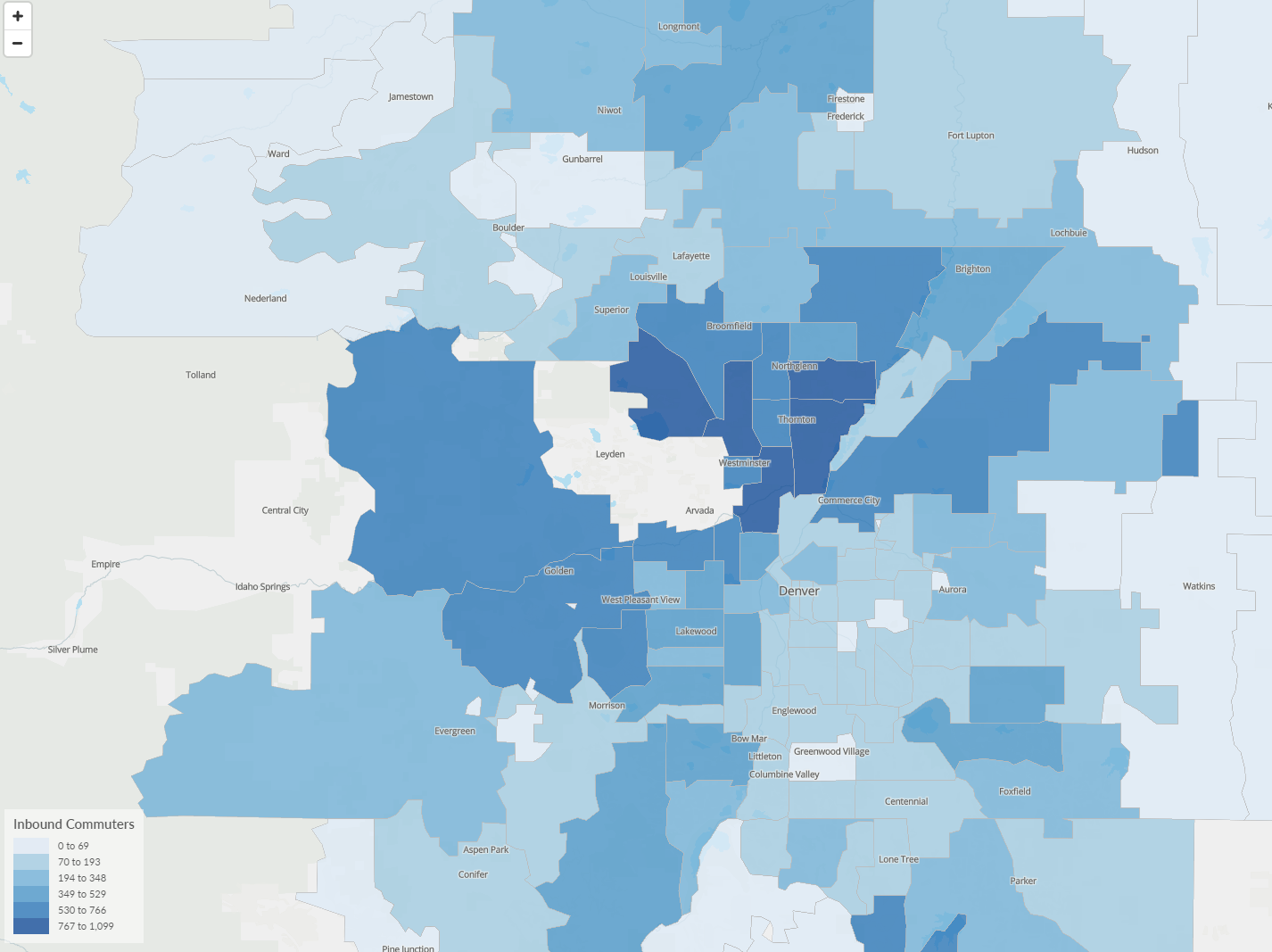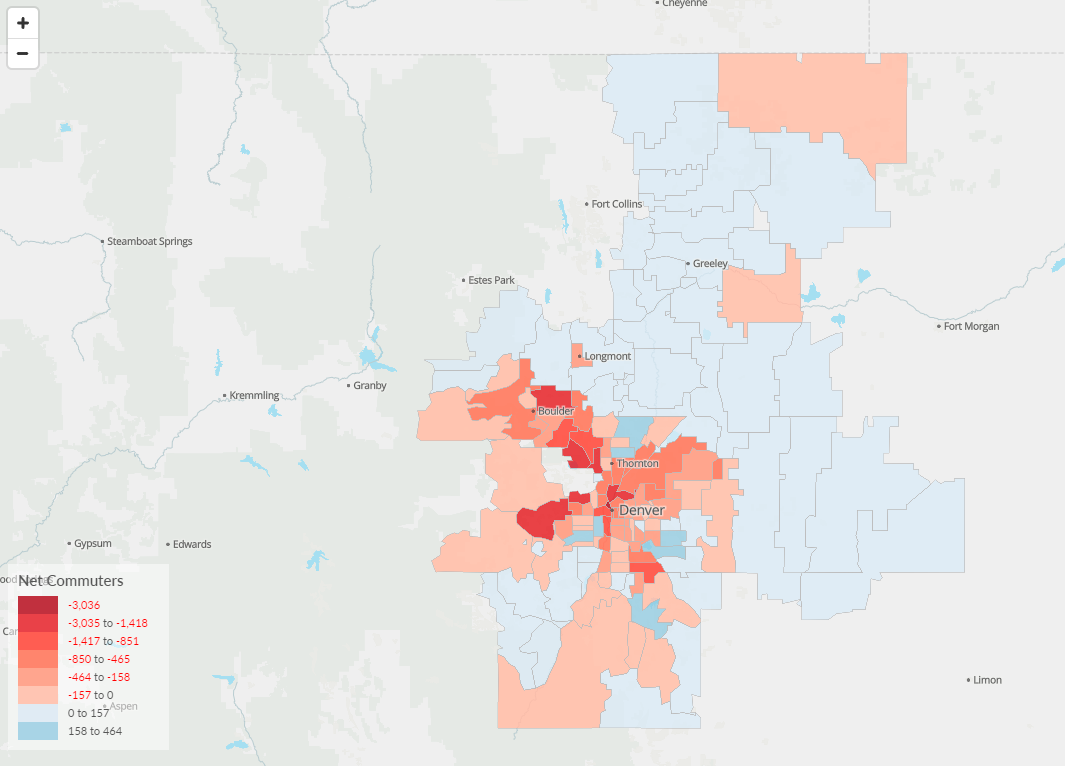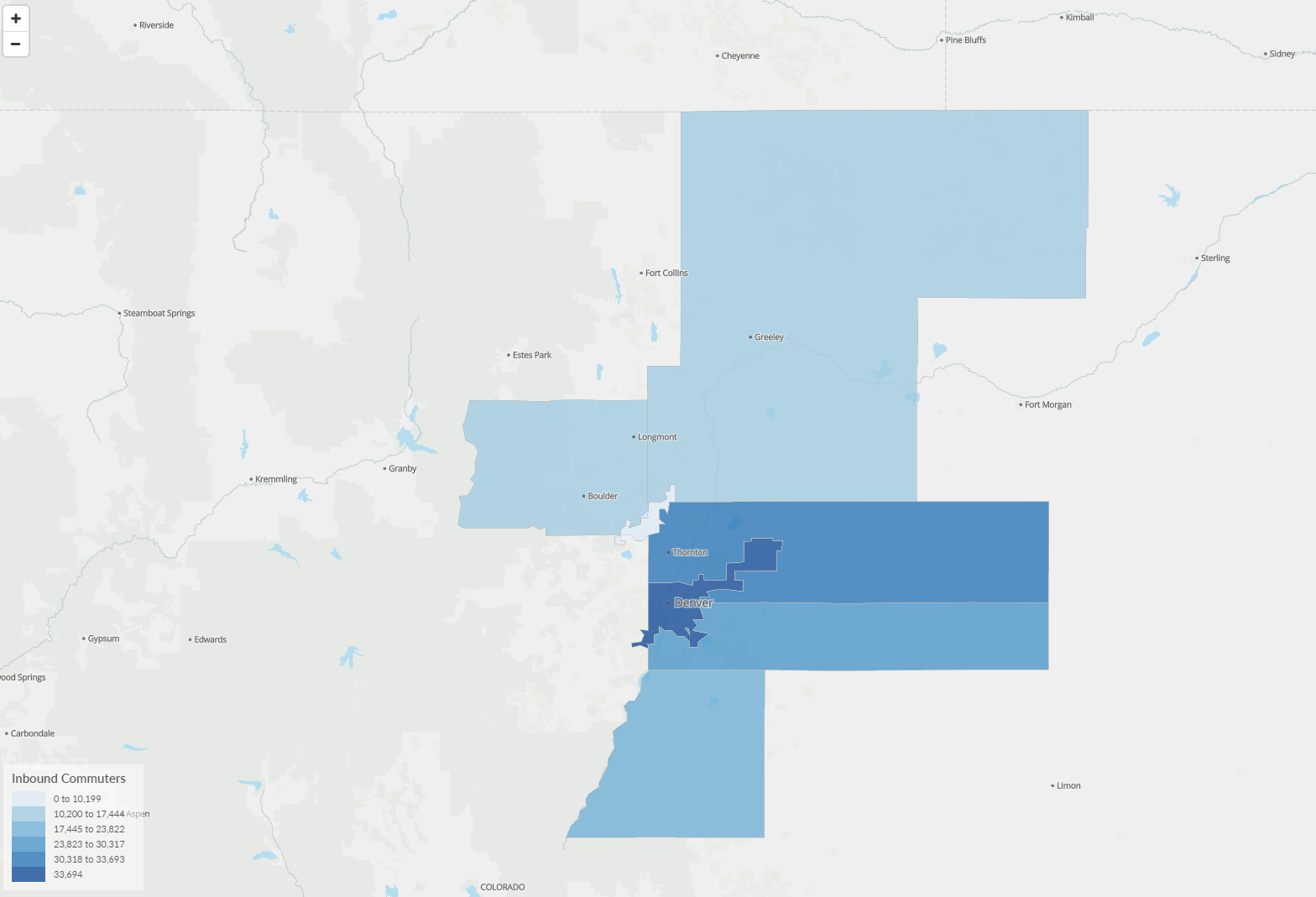By Tess McShane, Director of Housing & Childcare
As Arvada continues to evolve, understanding where its workforce lives becomes increasingly important for local businesses, government officials, and residents alike. With a diverse population and a range of employment opportunities, Arvada’s workforce dynamics reflect broader trends in the Denver metropolitan area. By exploring the residential patterns of Arvada’s workers, we can gain valuable insights into commuting habits, housing affordability, and the overall economic landscape of the region. More and more employers are noticing their employees are living farther away, commuting greater distances, or leaving job opportunities due to the rising housing costs in the region. As these concerns have continued to grow, the Arvada Chamber’s B.O.L.D. 2026 housing initiative seeks to engage regional business leaders and collaborative partners to support access to housing for the region’s workforce.
According to a report from Slacker, the current average commute time for the workforce traveling to Arvada is 27 minutes. Additionally, 42% of Arvada’s commuting workforce drives 30-minutes or more one-way to travel to their place of work. Research shows that employees commuting 30-minutes or more are significantly more likely to leave their place of employment, and employers are more likely to experience frequent employee turnover. One study found that employees who have a 15-minute or shorter commute are 20% more likely to stay at their place of employment.
According to a 2021 report by the Colorado Department of Labor and Employment, only 17.6% of Arvada’s workforce both lives and works in the city, while a significant 82.4% of the workforce resides outside of Arvada. So where does the workforce live?
The median home price in Arvada as of August 2024 is $655,500, and the average 1-bedroom rental is $1,831. To understand how these prices compare to where the workforce lives, we analyzed data from Lightcast Commuters Map, and data from Redfin, Zillow, and RentCafe. This analysis identified the top five inbound commuting locations for Arvada and Jefferson County, as well as the top positive net commuting locations.
Top Five Inbound Commuters
Below is a table highlighting the top five inbound commuter locations, showing the areas with the highest number of individuals commuting to Arvada for work. To compare, Jefferson County’s median home price is $636,094 with an average 1-bedroom rental price of $1,959.
| Zip Code | Median Home Price | Average 1-Bedroom Rental |
| 80021 (Broomfield, CO) | $575,000 | $1,940 |
| 80229 (Thornton, CO) | $440,000 | $1,868 |
| 80223 (Northglenn, CO) | $493,180 | $1,750 |
| 80031 (Westminster, CO) | $529,750 | $1,855 |
| 80221 (Sherrelwood, CO; Twin Lakes, CO; Berkeley, CO) | $527,500 | $1,901 |
According to Lightcast, this accounts for 4,436 inbound commuters. The below maps show inbound commuters to Arvada, with the darker blue cities indicating more inbound commuters.


Top Five Net Positive Commuters
Below is a table displaying the top five positive net commuter locations, indicating the areas where more individuals commute to Arvada for work than those commuting out of Arvada to these locations.
| Zip Code | Median Home Price | Average 1-Bedroom Rental |
| 80108 (Castle Pines, CO) | $884,000 | $2,040 |
| 80602 (Thornton, CO) | $681,000 | $1,868 |
| 80013 (Aurora, CO) | $500,000 | $1,767 |
| 80227 (Lakewood, CO) | $535,000 | $1,765 |
| 80015 (Aurora, CO) | $539,000 | $1,557 |
According to Lightcast, these five zip codes account for 1,228 inbound commuters, and 729 net commuters. The below map shows net positive commuters to Arvada, with blue shades indicating more commuters come to Arvada than go there each day.

To provide a clearer understanding of how the above figures compare to the commuter trends, the following tables illustrate the incoming and positive net commuter counties to Jefferson County and home and rental prices.
Top Incoming Commuters
| County | Median Home Price | Average 1-Bedroom Rental |
| Denver County | $571,035 | $1,974 |
| Adams County | $503,933 | $1,716 |
| Arapahoe County | $542,956 | $1,818 |
According to Lightcast, this accounts for 87,835 inbound commuters. The below map shows inbound commuters to Jefferson County.

Top Positive Net Commuters
| County | Median Home Price | Average 1-Bedroom Rental |
| Weld County | $501,296 | $1,190 |
| Douglas County | $725,519 | $1,856 |
According to Lightcast, this accounts for 27,694 inbound commuters and 9,622 net commuters.
Key Findings
1. Housing costs in Arvada are generally higher than in most of its top inbound commuter locations
- Arvada’s median home price ($655,500) is higher than all listed inbound commuter locations except Castle Pines.
- Arvada’s average rent ($1,831) is higher than most inbound commuter locations, with a few exceptions.
2. Commuter locations have significant price variations compared to Arvada.
- Castle Pines has the highest median home price ($884,000) among all locations, significantly above Arvada’s.
- Thornton (80229) has the lowest median home price ($440,000) among the top inbound commuters.
3. Notable commuter patterns both align and do not align to lower overall housing costs.
- Broomfield (80021) has the highest inbound commuters and a lower median housing cost, but higher rental cost.
- Castle Pines (80108) has the highest positive net commuters, despite having the highest housing costs.
4. A mix of urban vs. suburban trends influences commuting patterns and overall housing costs.
- Some suburban areas (like Castle Pines and Thorton) have higher housing costs but still show positive net commuting to Arvada.
- Urban areas like Aurora and Lakewood have lower housing costs and are among the top positive net commuter locations.
5. Communters experience regional differences in housing affordability.
- Denver County has higher average rent ($1,974) but a lower median home price ($571,035) compared to Arvada.
- Weld County shows the lowest average rent ($1,190) among the counties listed.
These findings suggest a complex relationship between housing costs and commuting patterns in the Arvada area, with factors beyond just housing affordability influencing where workers choose to live. The housing affordability challenge in Arvada has not gone unnoticed. Recognizing the critical link between housing access and economic vitality, the Arvada Chamber of Commerce has taken proactive steps to address this issue through its innovative B.O.L.D. 2026 housing initiative.
To support his crucial initiative and contribute to efforts to mitigate Arvada’s housing challenges, sign up to be a Housing Champion. As a Champion you have the opportunity to be a part of the network and be informed of upcoming activities, resources, and opportunities to support access to housing for our region’s workforce.




0 Comments